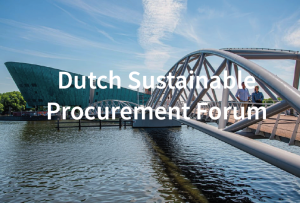Targeting supply chain risks with supplier management
Geopolitical challenges and volatile markets make transparent cooperation with qualified and sustainable business partners within the supply chain indispensable. As a result, suppliers are taking on an increasingly important position within the value chain of companies and supplier management is consequently a crucial factor for operational resilience and economic success.

Effective supplier management: The preventative solution for supply chain disruption
Geopolitical challenges and volatile markets make transparent cooperation with qualified and sustainable business partners within the supply chain indispensable. As a result, suppliers are taking on an increasingly important position within the value chain of companies and supplier management is consequently a crucial factor for operational resilience, economic success and mitigating supply chain risks.
To remain relevant and resistant as a business, sourcing high-quality products or services from reliable suppliers is the top priority. Effective supplier management is therefore crucial to minimising risks and ensuring a company’s success. It represents an essential component of risk management and refers to the process that companies go through to identify, select, evaluate and develop their suppliers. The aim is to ensure that suppliers meet the company’s requirements and that they minimise the risk of quality problems, delays in delivery or other disruptions, always ensuring supply.
What problems does procurement face and how can digital supplier management ensure supply security?
Supply chain issues are a common problem in today’s globalised economy. A supply chain consists of many different parties, each with its own processes and challenges. If one part of the supply chain fails (e.g., delivery is delayed or quality is not up to scratch), it will affect the other parties as well. These supply chain problems are influenced by two key risks. On the one hand, supply risks arise because of supply chain disruptions. On the other hand, potential dangers arise in the selection of and cooperation with high-risk suppliers, which accordingly influence the profitability, success and image of a company.
Supply risk
Supply risks often occur due to the failure of delivery services including suppliers who are unable to provide the required materials, raw materials or services. Logistical issues emerge when a company faces obstacles in distributing or conveying essential commodities. The factors contributing to these predicaments are diverse, ranging from transport capacity bottlenecks to unforeseen events like strikes. These issues can result in delaying deliveries, halting productiion, and ultimately jeopardising the company’s supply security. Additionally, natural disasters such as earthquakes, floods or hurricanes create logistical problems and affect a company’s security of supply as well. Damages to infrastructure and blocking transport routes resulting from these events can trigger delivery delays and production losses.
The solution: To ensure continuous supply, it is recommended that companies diversify their supplier base. One way to achieve this is by identifying alternative suppliers and expanding the pool of available options. In the event of a supplier failure, companies have further options to avoid a loss of production. Here, attention should be paid not only to technical diversification; but also, to geographical independence to minimise the risk of supply failures in the event of natural disasters. By choosing suppliers from different regions, dependence on a specific geographical area can be reduced, which is an important tool for the purchasing manager to prevent the risk of supply failures. To simplify the search for suitable suppliers and to manage existing supplier relationships, a supplier relationship management (SRM) suite is most appropriate. They represent a digital interface between supplier and purchaser, providing space for the search for suppliers, the exchange and systematic maintenance of selected suppliers.
In addition, good communication with suppliers is an important factor in minimising supply risks in supplier management. By using digital SRM systems, companies can optimise the dialogue with their suppliers and thus mitigate the risk. These supplier management platforms enable companies to share important information such as delivery schedules, purchase orders, invoices and contracts with their suppliers in real-time, leading to greater transparency and better collaboration between companies and suppliers. If suppliers experience delays or problems, they can communicate this quickly and the company can respond accordingly. In this way, the risk of delivery bottlenecks and related problems can be reduced.
Contingency plans play an important role in minimising supply risks in supplier management. A plan for emergencies helps to respond quickly to unforeseen events such as natural disasters, labour disputes or material shortages to maintain a continuous supply chain. To create an effective contingency plan, companies must first conduct a thorough risk analysis to identify potential disruptors in the supply chain. Then, clear responsibilities and measures should be defined to be able to react quickly in the event of an emergency. This makes it even more important to optimise the collaboration with suppliers, build supplier relationships and diversify suppliers. Once more, the significance of recognizing substitute suppliers to anticipate and prevent possible bottlenecks is emphasized. SRM systems aid in real-time monitoring and enhancing the supply chain, facilitating quick responses to disruptions. Contingency plans and SRM systems help companies to better react to unforeseen events and ensure the supply security of their supply chain.
Supplier risk
Supplier risks go hand in hand with the selection of suppliers and the cooperation with them. A company can quickly fall into a crisis if it is not careful enough in this selection. There are many reasons why a supplier can pose a risk. Run the gamut of quality problems and non-fulfilment of obligations to delivery issues due to the previously defined supply risks.
Relying on a supplier who fails to deliver the required quality or quantity can severely impact production, brand reputation, and customer satisfaction. Contract breaches or vendor insolvency can pose a significant risk, leaving the company unable to acquire essential materials and services in a timely manner. Furthermore, delivery issues hinder buyers from meeting crucial deadlines and fulfilling customer demands. Therefore, it is important to assess the suitability of potential suppliers during the selection process. Is the supplier financially stable? What are its competencies and experience? What quality assurance procedures and certifications can it demonstrate?
An important strategy in a company’s supply chain management is to monitor its suppliers. Through continuous supplier qualification and assessment processes, companies can identify and address potential risks associated with their suppliers before they become a major problem. This can prevent supplier failures due to financial instability, poor quality or late deliveries. Buyers can monitor the financial stability of suppliers by keeping an eye on their financial reports or credit ratings. Supplier performance evaluation and quality controls are also helpful in ensuring that suppliers fulfil their obligations and deliver the required materials and services in the desired quality and quantity.
Supply relationship management systems, which enable the digital search for and screening of potential suppliers, play an important role in the implementation of effective supplier monitoring. Important tools in SRM are supplier qualification, classification and evaluation. By employing these digital systems, buyers ensure that potential suppliers meet the requirements and guidelines by continuously checking their vendors. Supplier information can be systematically captured through digital means, serving as a central source for reviewing both current and potential suppliers. To ensure effective supplier management, it is important, to begin with a thorough selection process and maintain communication throughout the entire procurement process, from initial contact to ongoing collaboration during the delivery period, and to continuously work towards improving the relationship.
Why SRM systems are essential: Minimise risks and manage suppliers effectively
Buyers face multiple challenges and risks while collaborating with suppliers, without any specific protection measures available to address them directly. Therefore, it is of great importance to use the right tools to minimise risks and protect purchasing from potential threats. Although it is not possible avoid any risk, it is important to prepare and safeguard against it to ensure effective risk management. SRM systems provide these tools to specifically address the challenges and effectively and methodically manage one’s suppliers. This is why contemporary procurement processes cannot be envisioned without them anymore!
Weitere BlogsMore BlogsMeer blogs




